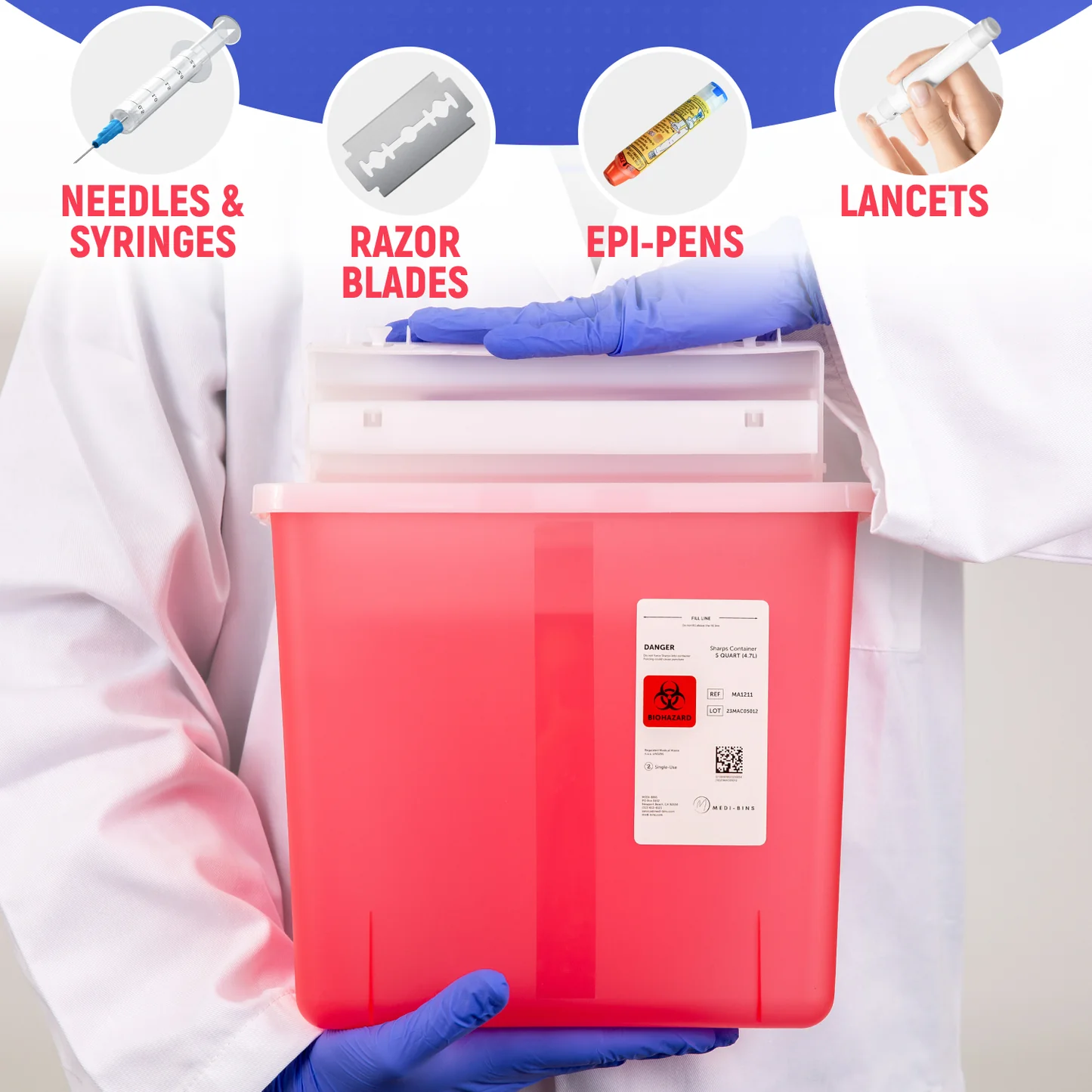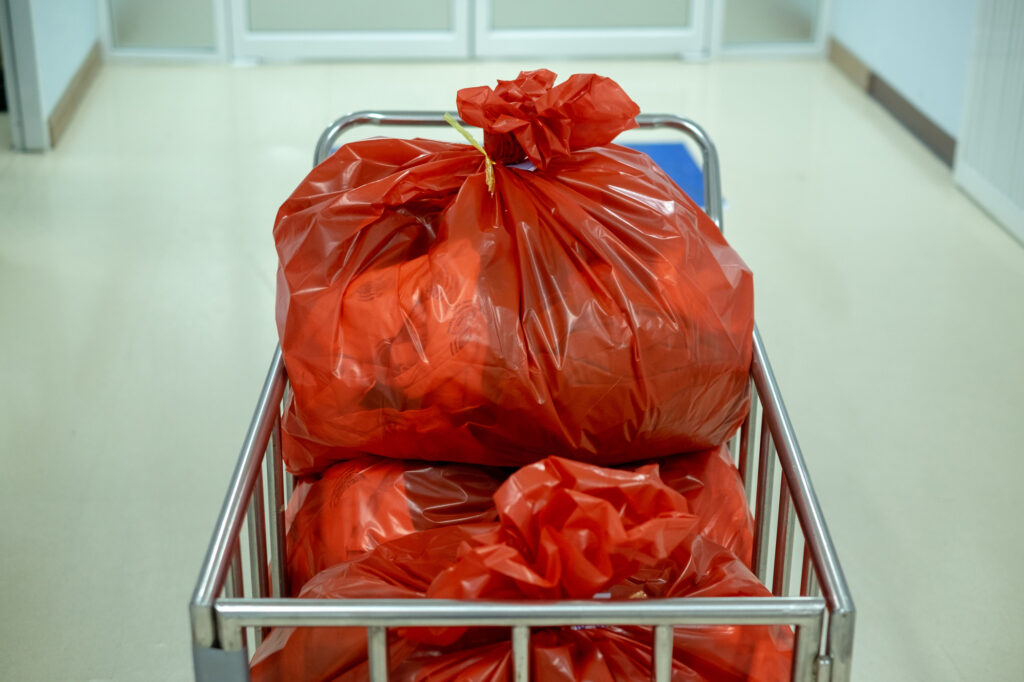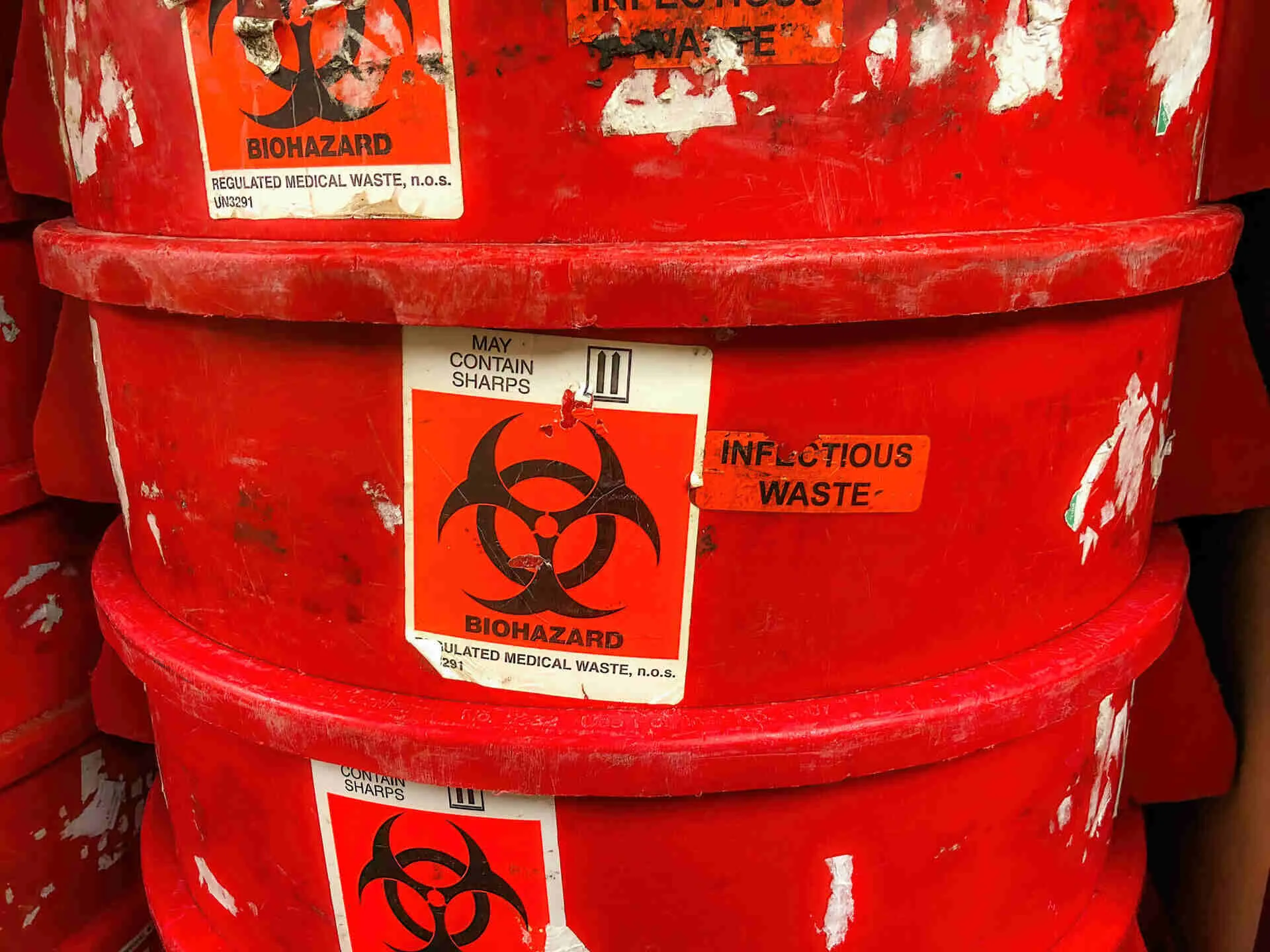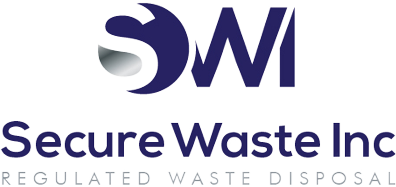Medical Waste Disposal Strategies to Prevent Drug Diversion
In healthcare facilities of all sizes and types, effective medical waste disposal policies are essential not only for regulatory compliance and operational safety but also to prevent controlled drug diversion, a growing threat to patient care and public health. Recent industry research reveals that nearly all healthcare leaders expect diversion to occur in hospitals at some level, yet most incidents often go unreported due to inadequate detection systems, fear of retaliation, or lack of clear reporting channels. This underreporting means the true scope of the problem remains hidden, allowing diversion to continue unchecked in many facilities.
By implementing clear disposal protocols that eliminate ambiguity, robust training programs that educate all staff on their responsibilities, and secure waste removal methods that prevent unauthorized access, organizations can significantly lower diversion risk and protect patients and staff from the devastating consequences of medication theft. For example, federal waste rules now explicitly mandate that any discarded medication must be rendered irretrievable and non-recoverable. Drugs cannot simply be flushed down drains or tossed in regular trash where they could be retrieved, as such practices violate DEA regulations and create both diversion opportunities and environmental hazards.
Medical Waste Disposal & Healthcare Waste Management
Clear, comprehensive policies form the first line of defense against diversion in any healthcare setting. Facilities must treat controlled substances as highly regulated materials requiring the most stringent safeguards throughout their lifecycle from procurement through disposal. For example, federal law requires DEA registration for handling controlled substances and strict chain-of-custody documentation for all narcotics from the moment they enter the facility until final destruction.
Establishing effective policies requires thoughtful consideration of workflow realities and potential vulnerabilities. Staff duties should be separated strategically so that ordering, receiving, dispensing, administering, and waste disposal are overseen by different individuals or require multiple signatures. This separation of duties creates checks and balances that make diversion significantly more difficult by requiring conspiracy rather than enabling individual theft. No single person should have unchecked authority over controlled substances at multiple points in the supply chain.
Controlled drugs must be stored in locked cabinets with restricted key access or automated dispensing systems with secure electronic authentication that logs every access attempt. Any removal or disposal of medication should be witnessed by a second staff member to ensure accuracy and create accountability. The witness should be independent, meaning they don’t report to the person disposing of medication and don’t have a conflict of interest that might compromise their objectivity.
Access to controlled substance storage areas should be strictly limited to authorized personnel with documented need, and access should be immediately revoked when staff change roles, go on extended leave, or separate from employment. Regular audits of access lists help identify inappropriate permissions that accumulate over time as responsibilities change.
Staff Training & Compliance
Education is critical to any diversion prevention plan and must be ongoing rather than a one-time checkbox exercise. All healthcare workers who handle medications, waste, or related documentation should receive regular training on controlled substance policies, OSHA standards for safe handling, and HIPAA requirements for protecting patient information. This includes clinical staff, pharmacy personnel, waste handlers, housekeeping staff, and even security personnel who may encounter waste during their duties.
Experts emphasize that preventing diversion “involves a combination of hospital policies, security and monitoring, and employee education” working together as an integrated system. Training should comprehensively cover clear definitions of diversion and what constitutes theft or misuse, legal and professional consequences for diverters including criminal prosecution and license revocation, how to spot behavioral and operational signs of misuse such as excessive waste or unusual patterns, and the facility’s confidential reporting procedures that protect whistleblowers from retaliation.
Refresher courses at orientation for new employees and annually thereafter for all staff help reinforce these protocols and update personnel on policy changes, new technologies, or lessons learned from incidents. Training should be interactive with scenarios and case studies rather than passive lectures, and should include assessment of comprehension to verify learning.
For example, OSHA standards require that medical waste be properly segregated into categories such as sharps versus general waste, and contained in leak-proof, labeled containers that prevent exposure to bloodborne pathogens. Staff must understand which waste streams require which containers and why mixing waste streams creates both safety and security problems.
HIPAA likewise mandates that any patient identifiers in waste, such as prescription labels, medication administration records, or related documents, be securely destroyed, typically by cross-cut shredding, before disposal or whenever the containers leave the secure area. This prevents privacy breaches and protects patient confidentiality even after care is complete. Training should include specific examples of what constitutes PHI in waste contexts since it’s not always obvious.
Secure Disposal Containers & Removal
The disposal containers themselves must be secure to prevent unauthorized access after medications are discarded. Facilities should use FDA-approved sharps and pharmaceutical waste bins that feature locking mechanisms to prevent opening, or contain chemical deactivating agents that immediately render medications unusable upon contact. These engineered solutions provide passive security that works continuously without requiring constant supervision.
These systems can neutralize controlled substances chemically, obscure them visually so they cannot be identified and sorted, or hide medications within a matrix that prevents retrieval. Access to these specialized containers should be tightly controlled through placement in secure areas, video surveillance to deter tampering, and clear accountability for the containers themselves.
Many hospitals require two-person verification, sometimes called a “waste buddy” system, for disposing of controlled substances to create accountability and deter theft through observation. The witness must directly observe the disposal, verify the medication name and quantity match documentation, and co-sign disposal records. This practice has been shown to significantly reduce diversion in facilities where it is consistently enforced.
Wasted drugs and needles should be emptied directly into these dedicated receptacles rather than ordinary trash bins or drains that provide easy access. Never allow controlled substances to be disposed of in regular waste or flushed down toilets, as both practices violate federal regulations and create diversion opportunities or environmental contamination.
Arrange for frequent pickups by certified waste disposal vendors to ensure secure waste removal from the facility before containers accumulate or become targets for theft. The vendor should provide locked transportation containers, documented chain of custody, and certificates of destruction that prove medications were completely destroyed. Longer intervals between pickups create more opportunities for container tampering.
Documentation, Monitoring & Analytics
Robust record-keeping is essential at every stage of controlled substance handling from ordering through final disposal. Every drug transaction, including ordering from suppliers, receiving at the pharmacy, dispensing to patient care units, administration to patients, and disposal of unused portions, should be logged with comprehensive details: the drug name and strength, exact quantity in standardized units, date and time of the transaction, and staff involved including witnesses.
Regular inventory audits and reconciliations comparing physical counts to electronic records help spot discrepancies quickly before they accumulate into large losses. Unexplained variances should trigger immediate investigation rather than being dismissed as documentation errors. For example, a 2025 survey found that about two-thirds of hospitals report only being somewhat confident in their diversion controls, highlighting the need for better oversight systems and more rigorous monitoring.
To strengthen monitoring and detection capabilities, many forward-thinking facilities are implementing advanced analytics systems that use algorithms to identify suspicious patterns invisible to human reviewers. In one peer-reviewed study, machine-learning algorithms detected diversion cases about 160 days faster than manual reviews conducted by humans, greatly improving detection speed and allowing intervention before significant harm occurs. These systems analyze vast amounts of transaction data to identify statistical anomalies, unusual patterns, or behaviors that deviate from norms.
Predictive analytics can flag high-risk situations like excessive waste from specific individuals, unusual access patterns such as accessing controlled substances during off-shifts when not assigned to work, discrepancies between patient pain scores and medication administration suggesting diversion, or medication removals that don’t correspond to patient orders.
Sustainable Waste Practices
Environmentally responsible waste management goes hand-in-hand with security and should be integrated into diversion prevention strategies. Always segregate waste streams appropriately: recyclables such as paper and clean plastics should be kept separate from pharmaceutical and biohazard waste. Proper segregation not only meets environmental regulations but can also reduce the volume of controlled waste requiring expensive specialized treatment, cutting costs while improving sustainability.
Cutting down on waste generation at the source further limits diversion opportunities by reducing the volume of medications that must be tracked and disposed of. For instance, tighter inventory control that minimizes expired medications, smaller-dose preparations that reduce leftover portions, and more accurate patient assessment that prevents over-ordering all mean fewer leftover drugs requiring disposal. As one review notes, “the more waste produced, the greater the prospect for medication diversion,” making waste minimization both a security and sustainability strategy.
Consider greener disposal technologies that reduce environmental impact without compromising security. Autoclaving or microwave treatment systems can sterilize and shrink pharmaceutical waste without incineration, reducing emissions and energy consumption while still rendering medications unusable. Some facilities even partner with eco-focused vendors using advanced technologies like plasma gasification or supercritical water oxidation, clean methods that completely destroy pharmaceuticals while minimizing emissions.
These alternative technologies represent the future of pharmaceutical waste treatment, balancing security requirements with environmental responsibility. They may have higher upfront costs but often provide long-term savings through reduced regulatory burden and improved public perception.
Checklist: Key Diversion Prevention Measures
Establish comprehensive controlled substance policies including obtaining required DEA registration, implementing separation of duties so multiple people oversee the supply chain, providing secure storage in locked areas with restricted access, and requiring witness verification for wasting drugs with documented sign-off by both parties.
Train all staff thoroughly on diversion risks and real consequences, OSHA safety standards for handling hazardous drugs and sharps, and HIPAA rules including proper sharps disposal in puncture-resistant containers and shredding of protected health information before disposal. Training should be role-specific and competency-based.
Use secure, tamper-evident disposal containers with chemical deactivating agents that render medications unusable, or locking mechanisms that prevent opening. Require two-person verification for controlled drug disposal with both individuals documenting the transaction. Position containers in secure, monitored locations.
Document every disposal event meticulously including drug name and strength, exact amount wasted, date and time of disposal, staff member disposing and witness name, and reason for disposal. Perform frequent inventory audits comparing physical counts to records, leveraging advanced analytics software where possible to detect patterns and anomalies invisible to manual review.
Adopt sustainable waste practices that also improve security: minimize excess inventory through just-in-time ordering, reduce waste generation through accurate dosing, recycle appropriate materials like clean packaging, and use eco-friendly treatment technologies like autoclaves that destroy medications without environmental impact.
Expert Tip:
Encourage staff to minimize leftover medication through accurate patient assessment and dose calculation. As one pharmacy review notes, “the more waste produced, the greater the prospect for medication diversion,” making waste reduction both a security imperative and environmental benefit. Tightening inventory control and standardizing dose sizes can meaningfully reduce diversion opportunities while cutting costs and improving sustainability.
Conclusion
In summary, secure medical waste disposal and strong healthcare waste management policies are crucial to curb drug diversion in modern healthcare facilities. By combining strict protocols that eliminate ambiguity, ongoing training that keeps staff informed and vigilant, robust documentation that creates accountability, advanced monitoring through analytics, and eco-conscious disposal methods that reduce environmental impact, facilities can improve OSHA and HIPAA compliance while simultaneously protecting patients and staff from the devastating effects of diversion.
These integrated strategies create multiple barriers that make diversion significantly more difficult and easier to detect when it does occur. No single measure is sufficient, but a comprehensive approach that addresses policies, people, and technology provides strong protection.
Contact Secure Waste for expert solutions in compliant, sustainable medical waste disposal that supports your diversion prevention program with secure containers, documented chain of custody, complete destruction, and environmental responsibility.

Expert Medical Waste Management: With over 25 years of industry experience, Secure Waste is a trusted local leader in hazardous and biohazardous waste disposal across Maryland, Virginia, and Washington, D.C. Specializing in medical waste management, sharps needle disposal, and biohazard waste removal, the company ensures full compliance with federal, state, and local regulations while prioritizing environmental sustainability.
The company also offers additional services, including secure document shredding and sharps container sales, providing comprehensive solutions for healthcare facilities and businesses. Our cost-effective services help clients maintain regulatory compliance without unexpected costs.
With a commitment to customer satisfaction, Secure Waste offers tailored waste management plans that align with industry best practices. Their team of experts provides reliable, timely, and compliant services, making them the preferred choice for medical waste disposal. For a free waste quote or more information, visit www.securewaste.net






